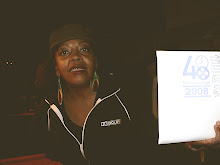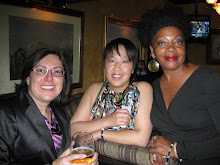 To producers such as Derrick May, the transference of spirit from the body to the machine is often a central preoccupation; essentially an expression of technological spirituality.
To producers such as Derrick May, the transference of spirit from the body to the machine is often a central preoccupation; essentially an expression of technological spirituality. Research Questions:
- How can we combine technology and imersive environments to create art as history and culture in performance that re-examine the relationship between human bodies, sound vibrations and the soul?
- What is the future of music evolution?
- Are the noises of the industrial age considered music?
- What is the future of techno music as education? How does it enhance learning?
- What are low tech tools?
- What is Techno Music?
- What are some choices of instruments or tools that can be used in music as instrumentation and performance art?
- What is call and response?
- What types of new forms of communication can be formed by integrating both primal forms and contemporary forms of call and response?
- What possibilities exist in the old and new forms in relation to the brain, the body and machines and the world?
- What types of new forms of communication can be formed with primal forms of call and response?
- What types of new forms of communication can be formed with contemporary forms of call and response?
The rise of music that is totally without social commitment also increases the separation between composer and public, and represents still another form of departure from tradition. The cynicism with which this particular departure seems to have been made is perfectly symbolized in John Cage's account of a public lecture he had given: "Later, during the question period, I gave one of six previously prepared answers regardless of the question asked. This was a reflection of my engagement in Zen." While Mr. Cage's famous silent piece [i.e. 4′33″], or his Landscapes for a dozen radio receivers may be of little interest as music, they are of enormous importance historically as representing the complete abdication of the artist's power.
by Valerie Oliverio
& Courtesy of Ars Electronica
Stick Pounding is the rhythmic language of the Gullah people. In slavery days they developed a ceremony called "ring shout" in which participants danced in a ritual fashion in a circle amidst the rhythmical pounding of sticks and then, at the culminating moment, experienced possession by the Holy Spirit while shouting expressions of praise and thanksgiving.
-Melanie DeMore
Watch 5minute documentary on Stick Pounding -
http://itdonnedonme.com/videos/stick_and_pound.mp4
"In the meantime, it has awakened in me a sort of curiosity about artists' choices of instruments or tools. I find that I am fascinated with artists who work with relatively low-tech tools, and I am also drawn to work by artists who have developed very technically complex tools for making their work. Some of the most exciting work I've seen lately combines very different types of tools. Acoustic instruments with electronic ones, mechanical devices with digital devices, machines with flesh and blood instruments. And it is interesting that, in a field that historically has seemed very male-dominated, many of the artists doing this are women." -Pamela Z
The initial take on techno arose from the melding of European electronic music by artists such as Kraftwerk with African American music including funk, electro, Chicago house and electric jazz. Added to this is the influence of futuristic and fictional themes that are relevant to life in American late capitalist society—particularly the book The Third Wave by Alvin Toffler. Pioneering producer Juan Atkins cites Toffler's phrase "techno rebels" as inspiring him to use the word techno to describe the musical style he helped to create. This unique blend of influences aligns techno with the aesthetic referred to as afrofuturism.






















































































